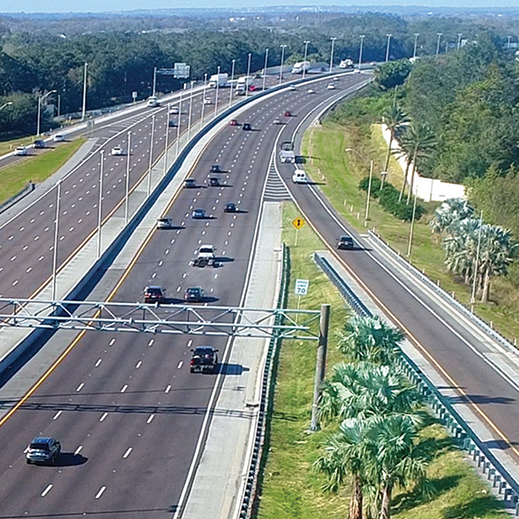Design Philosophy
In accordance with FDOT policy, the FTE Landscape Program focuses on achieving beautification within the context of conservation, preservation, and development of environmentally sustainable landscapes. FTE’s landscape design philosophy incorporates landscape and conservation values. Our focus as a program has shifted away from the “bold vision” design approach characterized by designing beautification projects using many large signature palms and few, if any, shrubs and returned to its historical roots of developing sustainable native landscapes. The FTE landscape program limits high-intensity landscapes to landmark destinations and focuses on healing native landscapes and developing opportunities to incorporate ecosystem services enhancing and conserving Florida’s natural environment.
While important, aesthetics is only part of the complex equation for producing responsible landscapes within the FTE highway system. Turnpike landscapes must also be called upon to modulate traffic behavior, stabilize steep erodible embankments, screen or emphasize views, provide environmental services, mitigate the effects of pavement and other man-made structures on the environment and minimize maintenance needs. Therefore, in keeping with the mandate issued by Department Policy Topic No. 000-650-011c, “Highway Beautification” future landscapes will provide a balance of high-intensity landscapes and native or naturalistic plantings.






